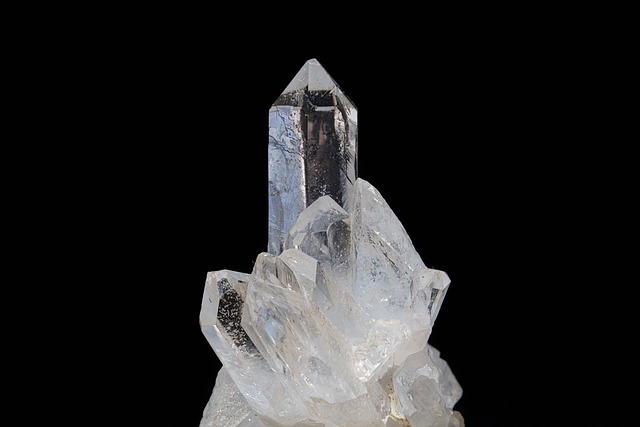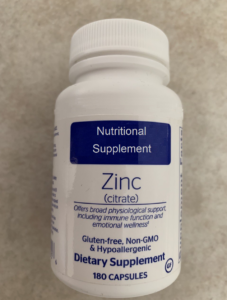The Health Benefits of Silicon
***Please note: this article is on oral supplementation with silicon as a mineral. Silicon dust, when inhaled, is very damaging to the lungs and should always be avoided.***

Silicon is a metalloid, an element that lies between the metals and nonmetals on the periodic table. Due to its nature as a metalloid, silicon has found many uses in society, in particular, in silicon-based electronic microchips that form the foundation of most of our technology. As an element, silicon is commonly encountered in the environment, being a component of sand, typically as the mineral quartz. Quartz is a crystal composed of a combination of silicon and oxygen which is also referred to as silica. Silicon should not be confused with silicone, a rubber-like material that contains silicon as part of its structure.
While there is no recommended intake for silicon, it does appear to influence a number of different biological systems throughout the body. Based on different findings, a number of common health claims have been associated with silicon:
- Improving Bone health
- Reducing Alzheimer’s disease risk
- Preventing heart disease
Silicon and Bone Health
Data on silicon appear to suggest that it provides benefits for bone health. A study on the addition of a silicon supplement to vitamin D and calcium in women with osteopenia or osteoporosis found some limited benefits (Spector 2008). After a year, the two higher doses of silicon (6 and 12 mg) significantly increased collagen formation. There were trends for improvements in bone marker formation and bone resorption. Overall, the results suggest modest benefits from the addition of silicon. Notably, average dietary silicon intakes are between 20 and 40 mg, so dosing in the study was fairly low and may have contributed to the results being small.
A shorter study of 12 weeks using artesian well water high in silicon found no detectable changes in relation to bone formation or resorption (Li 2010). The study provided 86 mg of silicon a day dissolved in water, but was of a fairly short duration for treating bone loss, a cumulative process that occurs over years.
An older study that used either oral or intravenous silicon found improved femoral bone mineral density (Eisinger 1993). Dosing was modest, just 16.5 mg intravenous per week or 27.5 mg oral supplementation over approximately one to two years.
A study looking at dietary intake of silicon and osteoporosis also appears to support a relationship between increased silicon intake and bone health (Jugdaohsingh 2004). However, the benefits were absent in postmenopausal women who were not on hormone replacement, arguably, one of the most important demographics for preserving bone health. It’s possible the finding was a statistical quirk and more research is needed to confirm.
Silicon and Alzheimer’s Disease
For years, there has been suggestions that aluminum toxicity is a contributing factor to Alzheimer’s disease. And while aluminum is detrimental to brain health, the symptoms of aluminum toxicity are not completely congruent with Alzheimer’s disease (See my previous blog on aluminum and dementia here). Still, silicon is known to help increase excretion of aluminum. As such, for those convinced of the aluminum hypothesis of dementia, silicon has been considered a potential treatment for aluminum excess and Alzheimer’s disease.
If silicon is present in drinking water it can help prevent the uptake of aluminum (Taylor 1995). A study even found that providing silicon-rich mineral water decreased the body burden of aluminum in humans (Davenward 2013).
One study exploring aluminum and silicon in water also found that silicon appeared to be protective in reducing the risk of dementia, although a geographical association based on levels of aluminum and silicon in water supplies did not find a clear association, weakening the results (Rondeau 2010).
Based on the data, it appears that silicon is likely helpful for reducing the body burden of aluminum. However, if it is helpful for the prevention of Alzheimer’s disease and other forms of dementia isn’t clearly established and needs additional research.
Silicon and Heart Disease

Silicon is present to a large degree in connective tissue, the same type of tissue that makes up the walls of blood vessels. The aorta, the main artery from the heart, has been shown to be particularly rich in silicon (Carlisle 1975). As such, animal research has explored the relationship between silicon intake and atherosclerosis. As a core component of heart disease, atherosclerosis is the process where blood vessels develop plaques that build up on the blood vessel walls which can potentially rupture or occlude the blood vessel itself.
Older studies in rabbits found that silicon was able to decrease atherosclerosis of the blood vessels (Loeper 1979). A more recent trial in hamsters with silicon-enriched spirulina, a type of edible algae, also found decreased levels of atherosclerosis (Vidé 2015). However, it’s worth noting that spirulina appeared to contribute to some of the benefits seen.
A study in humans exploring hair levels of silicon found that lower levels correlated with heart disease (Kwaśny 2020). Levels of the mineral were highly variable, even in subjects consuming the same diet, suggesting that intake may not be the only factor that influences silicon levels.
Overall, the data on heart disease and silicon are interesting, but far from conclusive. Human clinical trials and more epidemiological data are needed to determine the relationship between silicon, atherosclerosis and heart disease.
Conclusion
Silicon is a neglected mineral that deserves further study. It’s possible that adequate consumption may help to improve bone health, dementia risk and heart disease, although more data are clearly needed before any firm conclusions can be drawn.



